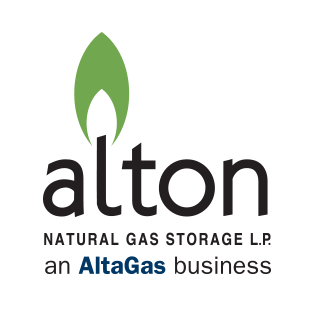Questions and answers about Alton
In this update, we are sharing frequently asked questions and answers about the Alton Natural Gas Storage Project.
What is the Alton Natural Gas Storage Project?
Nova Scotia’s energy mix is changing, and natural gas plays an increasingly important role. Every day, natural gas fuels our businesses and warms our homes. Natural gas is used by many of the province’s major industries and employers, the majority of universities, public institutions like hospitals and schools and thousands of homes. At Alton, natural gas will be stored deep underground in salt caverns near Stewiacke, NS to provide reliable and affordable supply for consumers. Underground storage of natural gas is a common, safe practice used around the world.
What are the benefits of natural gas storage?
The Alton gas storage facility will provide the people and businesses of Nova Scotia with reliable, low-cost energy. This will put money back into the pockets of homeowners, allow local businesses and industries to remain competitive and reduce costs to operate important public institutions.
Nova Scotia has some of the highest priced natural gas in North America. Natural gas is a flow through cost to customers; it is not ‘marked up’ by the distributor. Natural gas will be stored at Alton when prices are low so that it can be released to consumers at a lower cost as prices climb, like during cold winter months.
Natural gas storage contributes to a cleaner environment by helping to reduce greenhouse gas (GHG) emissions, because stored natural gas displaces fuels with higher emissions such as coal and fuel oil. A recent report shows how natural gas is helping to lower Nova Scotia’s GHG emissions.
Alton project staff and contractors work and raise their families in Nova Scotia. And since 2014, more than 70 Nova Scotia companies have provided goods, services and labour to the Alton project.
Have you talked to the Mi’kmaq of Nova Scotia and the community about your plans?
We operate by these basic principles: Respect the land, share the benefits, and nurture long-term relationships. We are committed to respectful and meaningful engagement with the Mi’kmaq of Nova Scotia and communities near the project, and have been doing that for many years.
Engagement with the Mi’kmaq of Nova Scotia includes discussions and meetings, two Mi’kmaq Ecological Knowledge Studies conducted by a Mi’kmaw firm and a 3rd party, independent science review of the project that was led by the Mi’kmaq of Nova Scotia.
We would welcome the participation of the Mi’kmaq in ongoing project monitoring.
Why build caverns at the Alton site?
The location of the Alton Natural Gas Storage Project is ideal because of the presence of a suitable underground salt formation where the caverns will be constructed, a water source for solution mining, and the nearby natural gas pipeline system.
The storage caverns will be located in a salt formation about one kilometre underground. This thick layer of rock salt was deposited by the evaporation of an ancient sea about 330 million years ago. Salt will completely surround the caverns.
How do you make the Alton storage caverns?
The caverns will be made using a process called solution mining or brining, which involves using water to dissolve rock salt buried deep underground. It will take 2 to 3 years for the brining process to be completed for each cavern. This process is highly regulated and must meet exacting standards required by all storage facilities in Canada.
Our starting point is clear: no harm can come to fish or the habitat of the Shubenacadie from the brining process. Water for brining will be piped from the tidal Shubenacadie River estuary, and brine will be released back into the tidal estuary at closely monitored levels under the oversight of government regulators. Protections are built into the project to help safeguard the Shubenacadie including controls on the salt that can be released into the tidal, salty water of the estuary. All fish in a tidal estuary like the Shubenacadie are used to large and rapid changes in salinity in their environment.
How do you monitor the Shubenacadie River estuary?
Alton will be built and operated to rigorous environmental standards. Over a decade of field and lab research conducted by expert fish researchers at Dalhousie University has provided significant baseline data on the Shubenacadie River estuary, and has helped to inform project planning, design and monitoring. Read more about the research findings. Alton would welcome the involvement of the Mi’kmaq of Nova Scotia in ongoing project monitoring.
Is natural gas stored in other places?
Natural gas storage facilities are common throughout the world and this project will be built and operated to the exacting standards required by all storage facilities in Canada.
Where can I get more information?
For more information on natural gas storage in Canada, see fact sheets from the National Energy Board and the Canadian Gas Association.
< Back to all news

